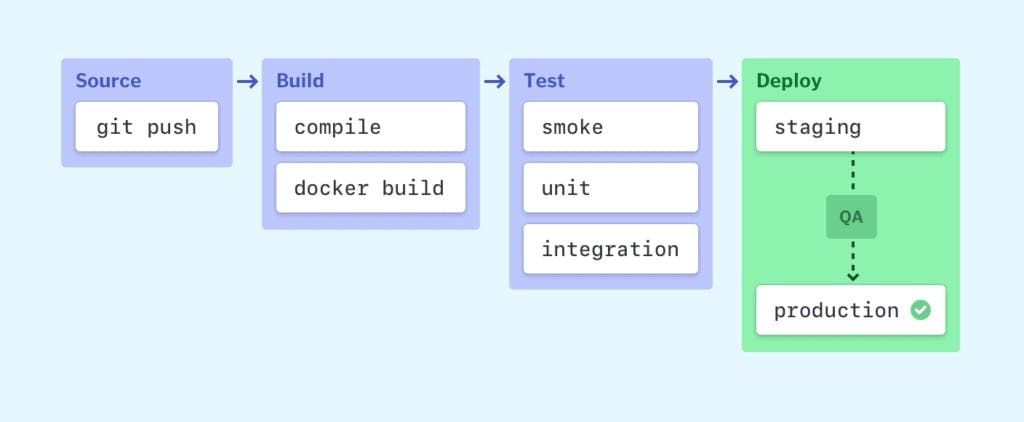CI/CD: Where Code Goes to Get Tested (and Occasionally Judged)
As I'm approaching the end of my degree, I keep hearing about CI/CD. I understand it's crucial for ensuring smooth operation of websites and apps, but I'm not sure how it directly benefits me. It turns out that establishing an effective CI/CD process for my personal portfolio site could be a game changer. It essentially automates all the mundane updating tasks, allowing me to concentrate on creating exciting projects and showcasing my skills to potential employers. It's time to delve into it and understand how it functions!
![]()
CI/CD is a strategy to automate the development process to speed up turnaround time. CI, or continuous integration, is the practice of frequently merging code changes into a shared branch. CD can refer to continuous delivery or deployment, which both automates the release and rollout of the application after merging.
What do CI and CD mean?

Continuous Integration (CI) is a software development practice where developers merge code changes into a central repository multiple times a day. Continuous Delivery (CD) builds on Continuous Integration by automating the entire software release process.
With CI, each code change triggers an automated build-and-test sequence for the project, providing feedback to the developers.
Continuous Delivery involves automating infrastructure provisioning and deployment, which may consist of multiple stages. The key is that all these processes are fully automated, with each run fully logged and visible to the entire team.
Why is CI/CD important ?
Elements of a CI/CD pipeline

Source Stage → Changes to the source code repository initiate a CI/CD pipeline run, notifying the tool to execute the workflow.
Build Stage → Source code and dependencies are compiled or packaged into a deployable artifact (like a Docker container).
Test Stage → Automated tests verify the code's functionality and ensure changes haven't introduced regressions.
Deploy Stages → The verified build artifact is deployed to various environments (e.g., staging, production), often following different strategies based on the environment.
Advantages of pipelines
Developers can continue to concentrate on building code and observing how the system behaves in real-world scenarios.
The most recent version of the system, or any version, is easily accessible to QA and product stakeholders..
Every code change, test, and deployment log is always accessible for review.
It's standard procedure to press a button to revert to an earlier version in case of an issue.
A quick feedback loop aids in the development of a responsible and learning corporate culture.
What makes a good pipeline?
Speed
CI/CD speed is crucial for developer efficiency. Slow feedback cycles disrupt developer focus and hinder productivity. Lengthy build, test, and deployment times restrict how often code can be safely deployed, resulting in less frequent and riskier updates. Scalable CI/CD pipelines that automatically adjust to development needs ensure resources are always available. Lastly, easily configurable pipelines streamline development and simplify the creation of new ones for microservice-based architectures.
Reliability
Reliable CI/CD pipelines provide consistent results and predictable runtimes. Unreliable pipelines cause developer frustration and hinder confidence in the process. Managing and scaling a reliable CI/CD infrastructure can be complex, especially for growing teams. A dependable CI/CD solution should deliver on-demand resources that are isolated and identical to ensure consistent output regardless of project size or team growth.
Accuracy
While automation is beneficial, a truly effective CI/CD pipeline accurately reflects the entire software delivery workflow. This demands a tool that can model complex processes, not just basic CI steps. Eliminating the need for manual deployment by automating and modeling even deployment workflows removes error-prone bottlenecks and increases the accuracy of the release process.
